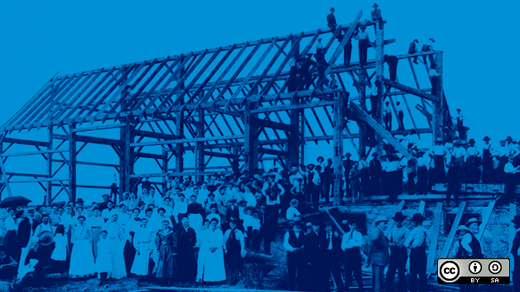Recently, fellow opensource.com writer Chris Grams remarked that our collection of articles and tips on community-building was getting rather large. Perhaps we had the material to write a set of best practices for building communities. So here’s my stab at it.
Best practices for building communities
1. Be purpose-driven.
Rick Warren books are a dime a dozen in used bookstores these days, but beneath all the drivel, the guy had it right. Humans often need a strong sense of purpose and direction in their endeavors.
In “Are you building a community or a club?” Chris Grams explains how communities that lose purpose often turn into exclusive clubs—and why that’s a bad thing. “Maslow's hierarchy of (community) needs” offers a community-oriented twist on the human need for self-actualization.
2. Keep your focus on your purpose and your members.
This should be rule #1 for communities developed by businesses. In “Do you aspire to build a brand community or a community brand?” and “Tom Sawyer, whitewashing fences, and building communities online” we learn why businesses often struggle to develop a community—and that people recognize when your “community” is really all about you.
3. Be deliberate in your decisions about a community and its culture.
Ruth Suehle offers concrete examples of deliberate decision-making in “Designing culture: The other community plumbing,” and in “Build an authentic, valuable online community,” I highlighted some real-life stories that illustrate this need.
4. Find tools and strategies that support communities.
“Open World Forum keynote panel: Challenges of open communities” brought together leaders from OW2, Apache, Eclipse, Open Office, and ForgeRock to share their methods for uniting global communities and overcoming cultural and language barriers.
In “Ben Brown on open source journalism, PeoplePods, and parties” we learn how building a community is like throwing a big party—for better or for worse. He also explains some of the fascinating community-building software he has worked on.
And in “Where design thinking and open source community collaboration meet,” Jonathan Opp suggests that design thinkers and open source contributors can learn from each other.
5. Involve your members.
This one sounds so obvious, doesn’t it? Yet in “A community-building perspective on the Gap logo controversy” we see a cautionary tale of a leader forgetting to engage the members of its brand community. The same lesson is presented in “Community-building tip: Surprise is the opposite of engagement.”
For a positive story of this best practice in action, check out DeLisa Alexander’s “How Red Hat democratized our corporate citizenship program.”
6. Empower your members.
Polly LaBarre’s excellent article “We work in public” covers her conversation with Enterprise 2.0 author Andrew McAfee about the changing requirements for business and community leaders. Leadership is no longer about being the smartest guy in the room, Polly tells us, but instead about finding and empowering other smart people.
And with my favorite article title ever, “How to find a community's cheeseheads when they aren't wearing foam hats” explains why you need to find and empower your most passionate fans.
The bottom line
There’s no guarantee that anyone can build and sustain a community. But there are certainly elements that most successful communities share, and that’s what we’ve tried to present here. Think we missed something? Disagree? Add your thoughts to the comments below.






1 Comment